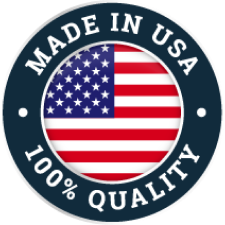- FREE SHIPPING ON ALL NEW UNITS

Pharmaceutical manufacturing is a highly regulated industry that demands the utmost precision and control to ensure product quality and safety. Among the critical aspects of pharmaceutical manufacturing is air filtration, which plays a vital role in maintaining a controlled and sterile environment. However, this industry faces unique challenges when it comes to air filtration. In this blog, we will explore some of the key challenges pharmaceutical manufacturers encounter in air filtration and the strategies employed to overcome them.
Pharmaceutical manufacturing requires the use of cleanrooms to prevent contamination and ensure product integrity. Cleanrooms have strict air quality standards and must adhere to specific particle count limits. Achieving and maintaining such stringent cleanroom requirements can be challenging, as any deviation could lead to product contamination and compromised quality.
Pharmaceutical manufacturing processes generate airborne particles, which can pose a risk to both product quality and personnel safety. The presence of particles in the air can contaminate the pharmaceutical products being manufactured, leading to potential recalls and financial losses.
To mitigate airborne contamination, manufacturers utilize a combination of air filtration technologies, including mechanical filters and high-efficiency filters. In addition, implementing proper airflow management and designing air handling systems that minimize particle generation are essential steps in ensuring a controlled environment.
Besides particles, microbial contamination is another significant concern in pharmaceutical manufacturing. Airborne microorganisms can compromise product sterility, leading to recalls, regulatory penalties, and damage to the company’s reputation.
In response to this challenge, pharmaceutical manufacturers employ advanced air purification systems that include UV germicidal irradiation and chemical disinfection technologies. These systems target and neutralize airborne microorganisms, providing an additional layer of protection against microbial contamination.
While meeting air quality requirements is crucial, pharmaceutical manufacturers must also consider energy efficiency and cost management. The high airflow rates required in cleanrooms to maintain cleanliness demand significant energy consumption, which can be a significant operational cost.
To strike a balance between air quality and energy efficiency, manufacturers utilize variable air volume (VAV) systems, which adjust the airflow based on real-time contamination levels. Additionally, selecting energy-efficient air filters and adopting proper maintenance practices can lead to substantial energy savings over time.
Pharmaceutical manufacturing facilities must adhere to strict regulatory guidelines set by health authorities like the FDA (Food and Drug Administration) and EMA (European Medicines Agency). Validating air filtration systems to ensure they meet regulatory requirements is a critical challenge.
To address validation and compliance challenges, manufacturers work closely with specialized experts and conduct rigorous testing and monitoring of air filtration systems. Regular audits and continuous monitoring help maintain compliance and demonstrate the facility’s commitment to meeting regulatory standards.
Air filtration challenges in pharmaceutical manufacturing are diverse and demand a comprehensive approach to address them effectively. Stringent cleanroom requirements, managing airborne and microbial contamination, energy efficiency considerations, and compliance with regulatory guidelines are all significant challenges faced by pharmaceutical manufacturers.
